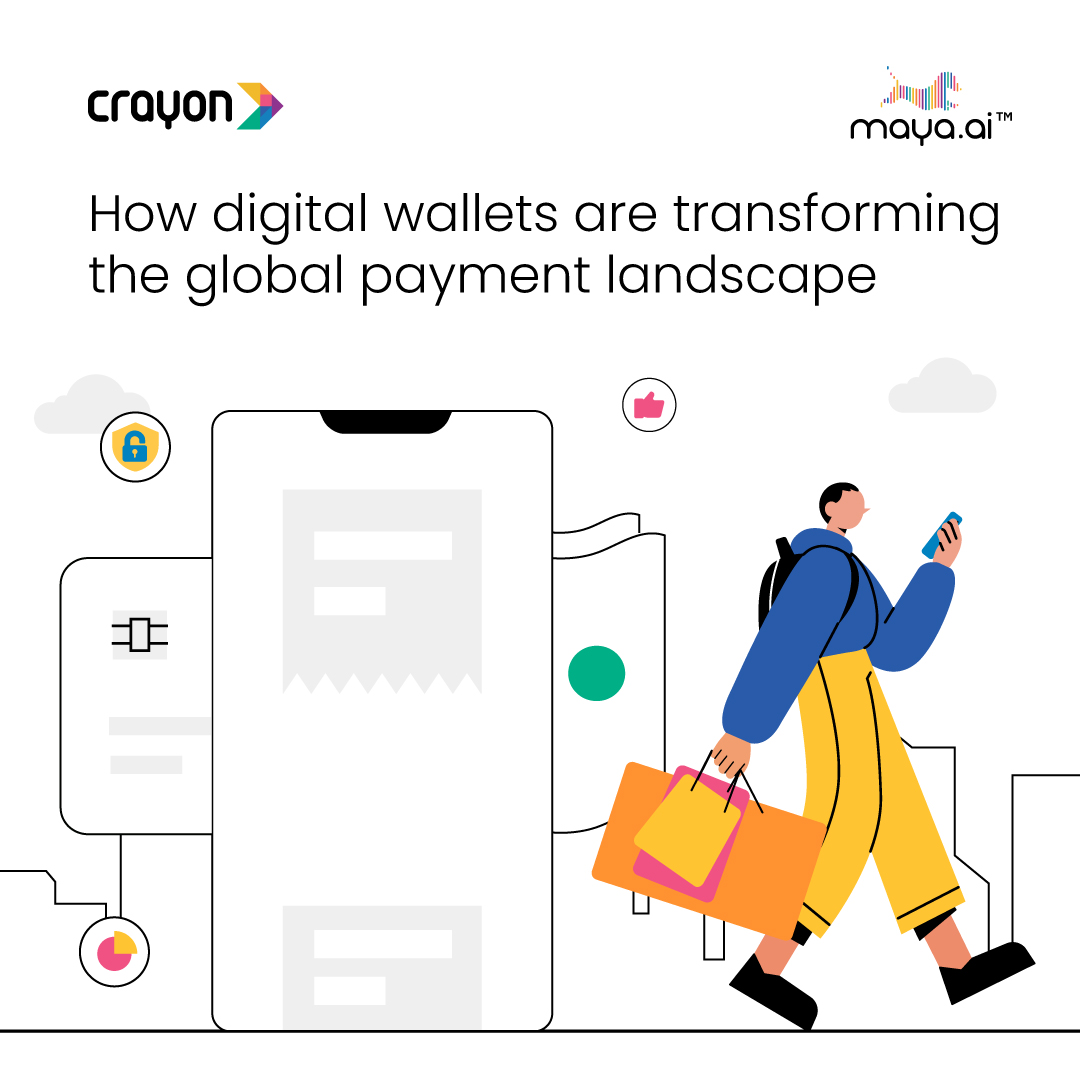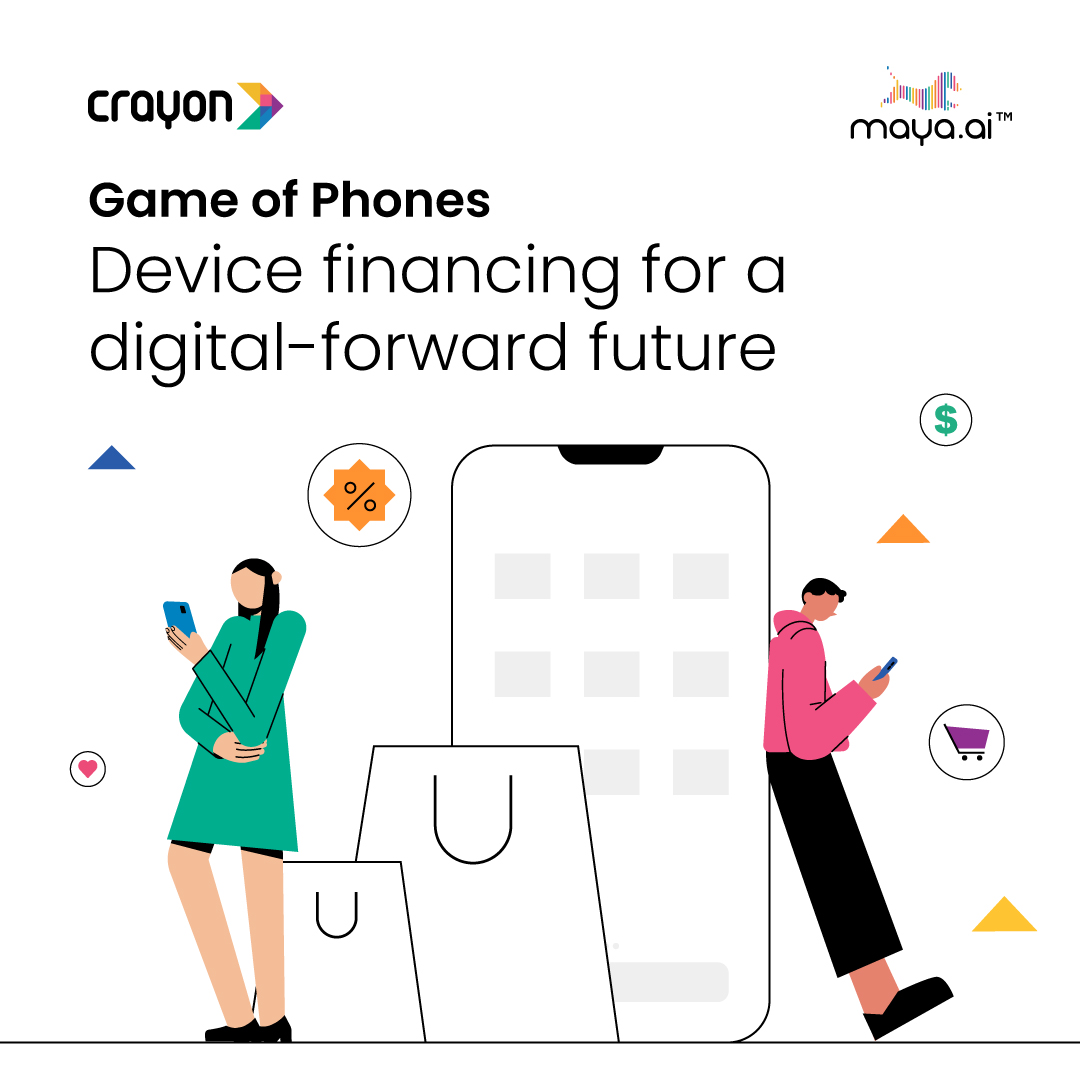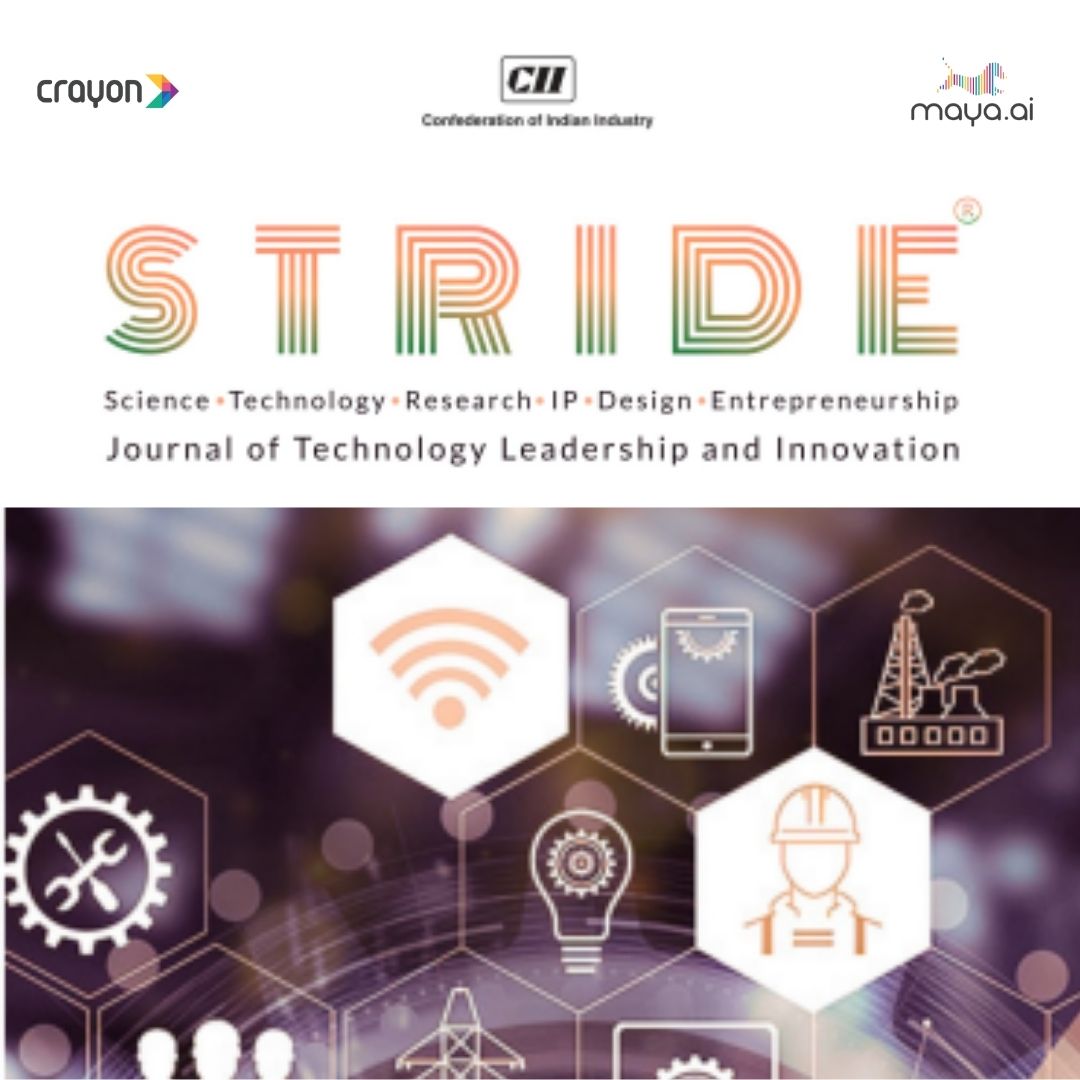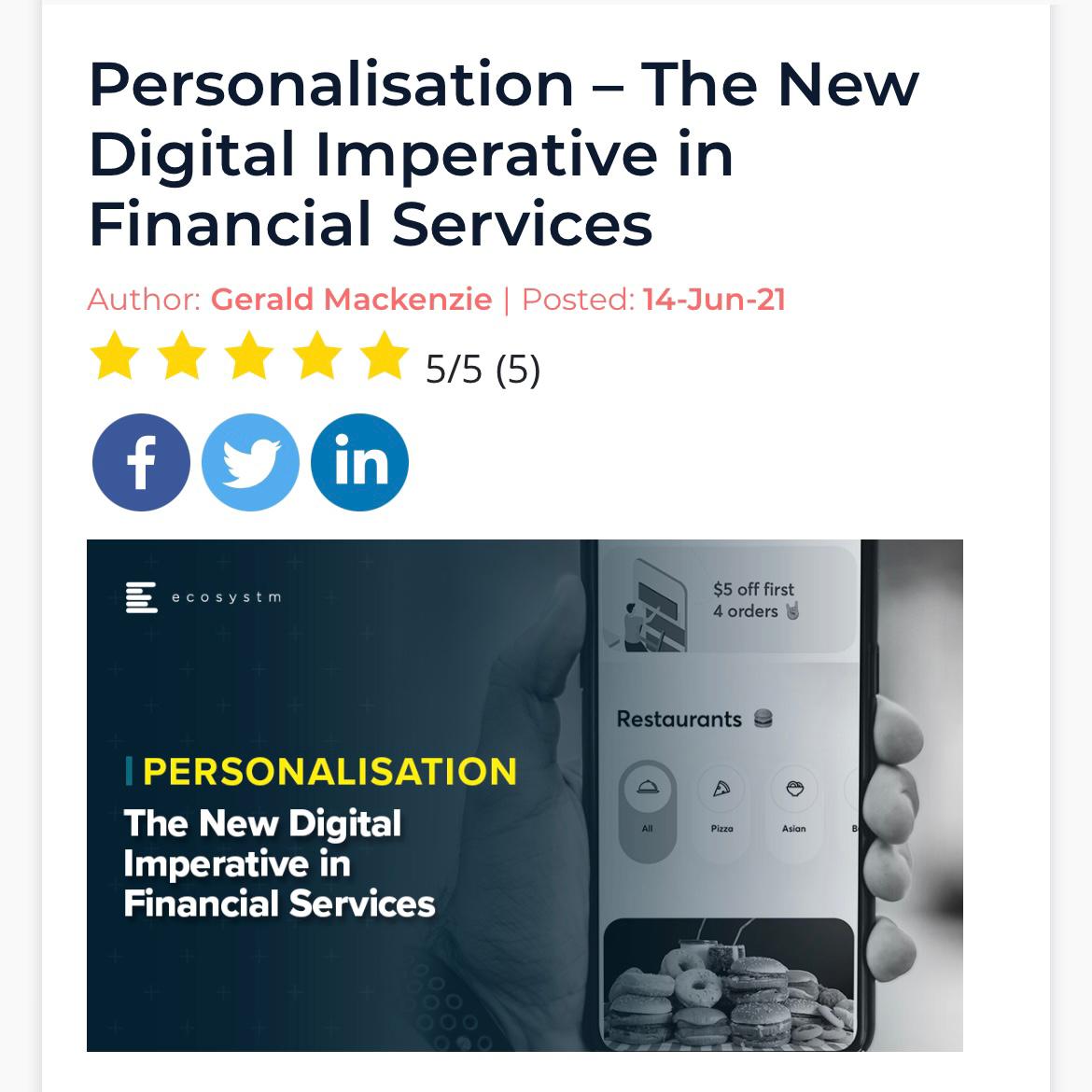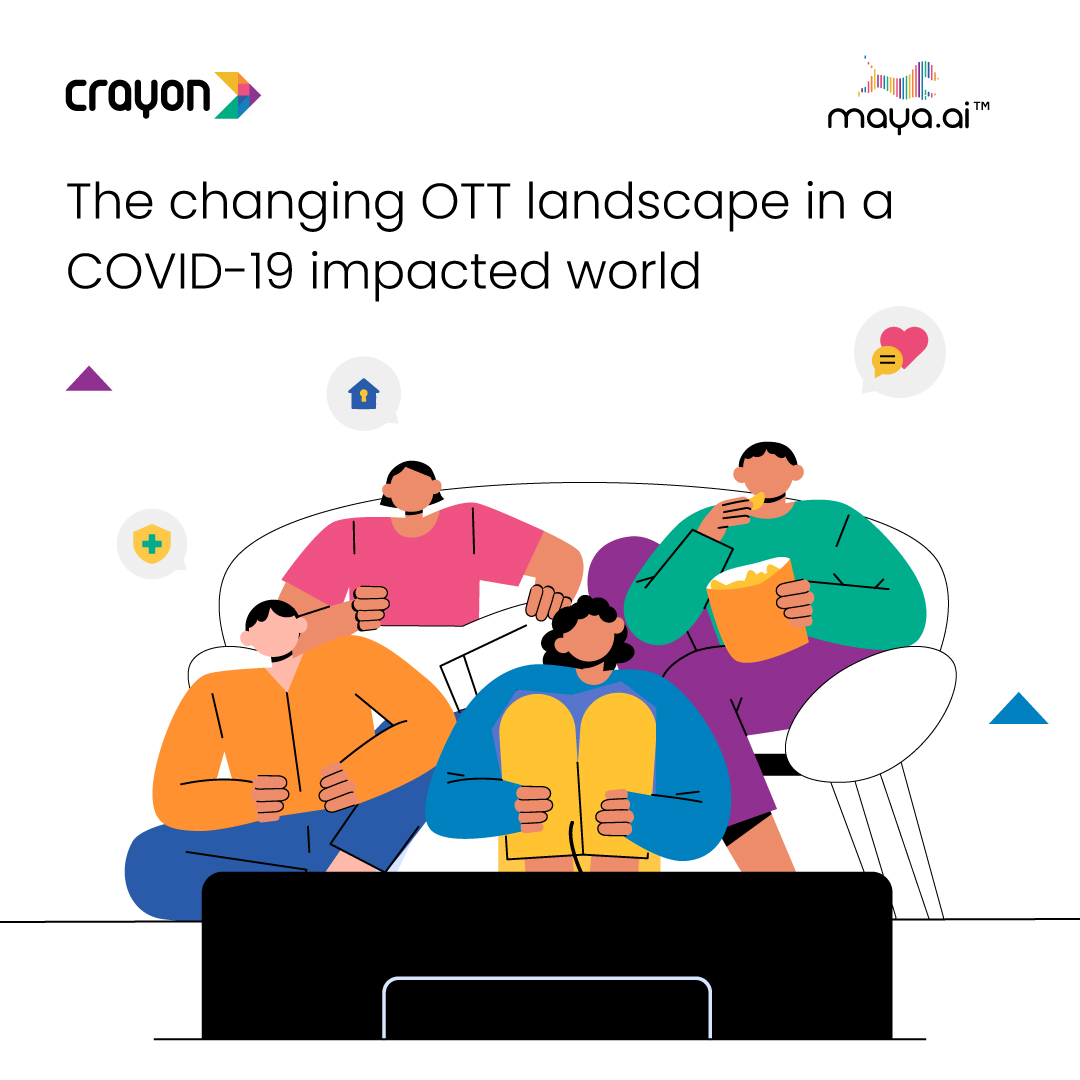I recently interviewed JP Nicols, the co-founder of bank innovators council, for Big data made simple(Crayon’s big data content hub). It was truly an honor to have the opportunity to speak to, and learn from, one of the most influential voices in banking.
We talked about a wide range of subjects, from innovation in banking and the need of the hour being personalization, to his own business interests and the future of banking.
Stay tuned, for I will be interviewing many more experts from the banking industry!
Read the complete interview below:
For decades, banks have only competed with one another, on the same terms. As an industry not very used to change, the banking sector is currently undergoing a radical transformation. JP Nicols, a veteran of the banking sector, has spent twenty years in the space. For the past eight years, his work has been at the intersection of banking and fintech. In this interview, Nicols shares his perspectives on the transformation of the banking sector.
You are the COO of Innosect.com. What exactly does Innosect do and what is your role as a COO at Innosect?
At Innosect, we believe innovation is the intersection of human capacity and ideas. Ideas alone are a dime a dozen. What matters is how you organize people around those ideas to bring them to life.
I often tell banking audiences about what happened to Kodak . It is not that Kodak was unaware of digital photography, in fact they were actually pioneers of the technology. However, they failed to get the company focused on how digital innovations in the industry were changing customer behaviors.
All businesses want to move forward. To do so, they not only have to create ideas but implement them and turn them into revenue.
That’s where Innosect comes in. We mobilize companies to turn ideas into action, often that is under the heading of innovation, but it may also be a product manager or a business line executive that just wants help generating new sources of revenue or new cost savings.
What kind of analytics techniques do you use at Innosect.com?
Founder and chairman of Innosect, Jay Van Zyl, has been a pioneer in social innovation. Social innovation is the concept of getting people involved throughout the organization, in the process of innovation. He helped FNB (number one bank in South Africa) to be named the most innovative bank in the world in 2012, he did that using the social innovation approach. He got people across the whole organization involved in ideas.
Now, we do it with big data analytics at machine scale. We are taking social computing and multi-dimensional data sets and actually applying network theory and social computation, on how people and ideas come together.
What if, out of your hundred ideas, we could tell you which two you should try first – based on market place positioning, your customers and your probability for success. These are the algorithms we are building and testing.
Our algorithms are similar to the network analysis techniques used to track terrorists. A government security agency once wanted our help tracking down some suspected hackers. We were actually able to predict their location based on analyzing social and multi-dimensional data. But that’s the most I can tell you!
With what motives and vision did you start the Bank Innovators Council?
The Bank Innovators Council is a public membership organization that is designed to support and promote innovation banking. Our motive was simple. Three years ago, I was a part of a bank that wanted to innovate. I also knew that such people were often lonely, because they were surrounded by what we called the “Business Prevention Department”. Fintech companies actually have a lot of support, in the form of incubators, accelerators and venture capitalists, but banks were on their own.
We wanted to reach out to bankers who were trying to innovate and create a change, and give them a place to connect, support one another, and discover new ideas.
Two years ago, we launched the Bank Innovators Council in New York during Finovate Fall . Today, we have members in 65 countries.
In your interview with Money Summit companies you said:
That if consumers engage directly with fintech companies instead of banks, then banks become a commodity behind the scenes.
To illustrate your point, you talked about companies like Kabbage or Moven or Prosper that team up with a banking entity.
Why did you make this statement? Can you please elaborate?
Harvard professors — John Haggle and Marc Singer—formulated a concept called unbundling the corporation. There was a similar concept brought out by Michael Treacy and Fred Wiersem in their book called, “ The discipline of market leaders.” Each of those two groups came up with similar positions, even though they use slightly different terminology. Let me explain.
There are three main domains, which you can master in any business:
- an infrastructure manager
- being customer intimate
- a product innovator
I believe that very few banks will be product innovators, maybe a handful across the globe.
When asked, most banks think that they are customer intimate. Just last week, I was a keynote speaker at an event. I asked the audience what single word they think differentiates them from everybody else. Most people simultaneously said the same thing; service.
Hence, even though banks think they are customer intimate, they are not—they are all trying to compete on the same dimension. Realistically, most of them focus on infrastructure. Banks pay attention to economies of scale, standardization and cost reduction; all three far from customer intimacy.
So if banks cannot truly be customer intimate, they are doomed to be just dumb commodities, acting behind the scenes, like utilities. The problem arises when we think about how many of these banks we really need. In the US, there are over 6,000 banks, and we certainly don’t need 6,000 utilities. What we need is a bank that is intimate with a group of customers that truly thinks about their needs, ambitions and problems.
43 percent of U.S. customers believe their primary bank does not understand their needs. How can you explain this?
I think there are two primary causes for this:
The first, is that for thousands of years, banks have only competed with one another. They didn’t have to provide meaningful benefits to their customers. They just needed to be better than the worst bank. Technology has completely changed this.
The second, is that the current era is one that is in the context of the aftermath of a global financial crisis. The focus for many since the crisis has been on standardizing and improving internal processes and quantifying and reducing risks, and not enough banks have been truly focused on taking care of the customer. This focus has been driven by regulators’ concerns about banks’ stability and compliance, and with eliminating unfair and deceptive practices. Banks don’t have a choice to be compliant, but the regulators are typically focused on what negative behaviors to avoid, not what positive, customer-centric behaviors to embrace. All of this tends to reinforce the necessity of focusing on infrastructure.
The problem with losing customers is, it doesn’t hurt overnight. If you quietly leak a few customers every year, it’s easy to misdiagnose what went wrong, and you keep making small adjustments to improve customer experience. Meanwhile, the gap between the experience you are providing and what your customer needs keeps widening.
A customer who spends his days using customer friendly apps like Uber, Netflix, even Starbucks, feels a huge disconnect when he walks into a bank branch. Bankers don’t even recognize this disconnect.
How do you think banks can understand their customers better, and become a part of their customers’ lives?
That’s simple. They need to analyse customer data. Data from social media, merchants, and transactions is readily available to banks. They can create buyer personas around their customers. Banks can buy aggregated data from companies like Yodlee, Xignite, and others. Merchants like Nordstorm, Walmart and Target have a lot of customer data, and they are very good at analyzing it. Most merchants are pretty proprietary about that data, but a strong partnership that combines merchant purchase data with banks’ income and other data would create even deeper insights to provide a more intimate customer experience.
Major banks sit on troves of data. However, less than 10% of this data is readily accessible, and less than 1% is actually used for any analytics. So, how can banks better exploit the power of data?
The good news is that even the worst banks have thousands, if not millions, of customers, and a lot of data on those customers. They know what their customers own and what they owe, what comes in and what goes out, when it goes and where it goes.You are absolutely right that they have done very little with it so far. However, they are investing in big data analytics, in better ways to harness the data. There are many even looking for partnerships with big data firms and customer-facing technology firms. In my opinion, the winners of the future will be the ones who successfully adopt big data technologies.
As for those who don’t, I think they will just quietly merge with somebody who understands how to monetize their customer data. Lack of innovation is never put on a banks’ tombstone when it dies.
BBVA, Capital One, Wells Fargo, are just some of the banks starting to experiment with big data. To quote Francisco Gonzales, chairman of BBVA, “BBVA will be a software company in the future.”
There are a number of banks that are using cutting-edge innovative tech. Can you give us some examples of banks that are doing well in digital personalization and the big data space?
Capital One is a credit card company turned bank that is trying hard to personalize offers for their customers.
Umqua Bank in Portland, Oregon takes a bit of a unique approach. They aren’t really high tech, and their personalization mostly comes from building engaging branch environments. In the long run, we will need fewer branches overall in banking, but banks like Umqua will do well with branches.
Barclays is experimenting with tech startups that tackle different facets of consumer issues. I think this works for bigger banks who can afford to invest in this kind of approach.
It’s getting harder and harder for small banks on one hand, but on the other, technology has never been more easily accessible. Small banks like Live Oak Bank and CBW are examples of such banks, that have embraced technology despite their size. Even more important than their use of technology though, is a very strong focus on customer intimacy. They are very clear about who their customers are, and who they aren’t. Most banks cannot be all things to all people, and they shouldn’t try.
What is the future of banking?
As far as I’m concerned, there are two trends.
The first, is what Francisco Gonzalez said, Successful banks are going to be more like technology companies.
The second, is that we will have fewer banks. Banks that were built in the era of brick and mortar either have to upgrade themselves, or risk being burnt to the ground.
I think these two trends will combine in pretty powerful ways, and the most successful banks will be the ones that are digital.








